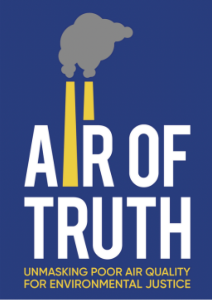
OP-ED By Dr. Bob Morrow
As a member of the Beczak Environmental Education Center in Yonkers, and a retired family physician, I’ve seen how air pollution affects our community’s health. We see daily that the air we breathe in Yonkers is making us sick.
On Wednesday, September 25, at 6 PM, the New York State Department of Environmental Conservation (DEC) will present the results of its air quality monitoring in Mount Vernon, New Rochelle, and Yonkers. The event will be at the Doles Center in Mount Vernon and pre-registration is not required. Please attend this important event.
The Reality: Air Pollution Is Hurting Us
Air pollution is a public health crisis. Westchester County has received failing grades for air quality from the American Lung Association, especially high ozone levels. These pollutants worsen respiratory conditions like asthma and COPD and increase the risk of heart attacks and strokes, especially in children, seniors, and those with pre-existing conditions.
When I moved to Southwest Yonkers in 1977, near a new sewage treatment plant, I quickly learned that odors don’t kill—it’s the particles and volatile organic compounds that do. Over time, alarming data has shown just how harmful our air is. This data started to be uncovered by scientists worldwide 20 years after opening, and now we have this astounding data, thanks to citizen action, a NYS voter-forced analytic with teeth. Our census tract has some of the worst health outcomes for sudden death in New York State, despite ranking lower for older populations.
The results of the DEC data are clear and you can see for yourself. Low-income neighborhoods and communities of color are disproportionately exposed to pollution that makes us sick. It is worst for those living near high-traffic roads and industrial zones, as well as other major emitters of microparticles (pm 2.5s particularly) and volatile organic compounds.
More Data and Better Solutions Are Needed
The DEC’s air quality monitoring provides valuable insights into the pollution levels across our communities, and it’s essential that we fully utilize this state data as we work toward solutions. This includes full use of the methane data, an important volatile organic compound.
However, we also need more granular and continuous data to capture how pollution fluctuates throughout the day and across seasons. While the current state data offer a solid foundation, expanding monitoring efforts with localized, real-time data will give us a clearer picture of the daily air pollution. By combining both existing state data and new data collection efforts, we can acquire the most accurate and comprehensive information possible.
Empowering the Community Through Citizen Science
At Beczak, we’re leading a citizen science air monitoring program where we’re training local youth to track air quality themselves. We already have hard evidence of peak loads of pm2.5 particles around midnight and early morning producing a 25 fold increase in toxic emissions.This hands-on approach not only provides supplemental data to what the state collects, but also empowers young people to learn about and advocate for cleaner air.
The Right to Clean Air and the Time to Act
New York’s Green Rights Amendment guarantees us the right to clean air, water, and a healthy environment. But rights alone don’t solve problems—action does. Our Climate Act requires that climate funding be directed to frontline communities.
Funding resources, like those included in the Environmental Bond Act can support the development of zero-emission transportation, green infrastructure, and community health programs. Now is the time for us to work together—residents, educators, policymakers, and local governments—to develop solutions that benefit all of us.
What We Need to Do
To protect the health of Yonkers, Mount Vernon, and New Rochelle, we must demand solutions including:
- Zero-emission buses to replace diesel vehicles and reduce emissions in high-traffic areas.
- Noise barriers and stricter construction regulations to reduce the impact of traffic and development.
- Green infrastructure, such as vegetative buffers along highways, to filter pollutants.
- Real-time air quality monitoring to track pollution and respond quickly to health risks.
- Community health programs to address health disparities caused by pollution, focusing on asthma prevention and respiratory care.
- Controls on the diesel trucking in our communities, and modernization of our sewage treatment plants.
Together, we can ensure that the DEC’s air monitoring leads to real action and cleaner air for all of us. Clean air isn’t just a right—it’s essential for the health and well-being of our children and future generations, and all of us right now.
About Air of Truth: The Air of Truth is a campaign from The Energy Justice Law & Policy Center to increase awareness about air quality. www.AirofTruth.org. www.EJLPC.org.
New York State is releasing its Yonkers, New Rochelle, and Mt. Vernon environmental justice air quality data to the community on Wednesday, September 25 at the Doles Center in Mt. Vernon.





